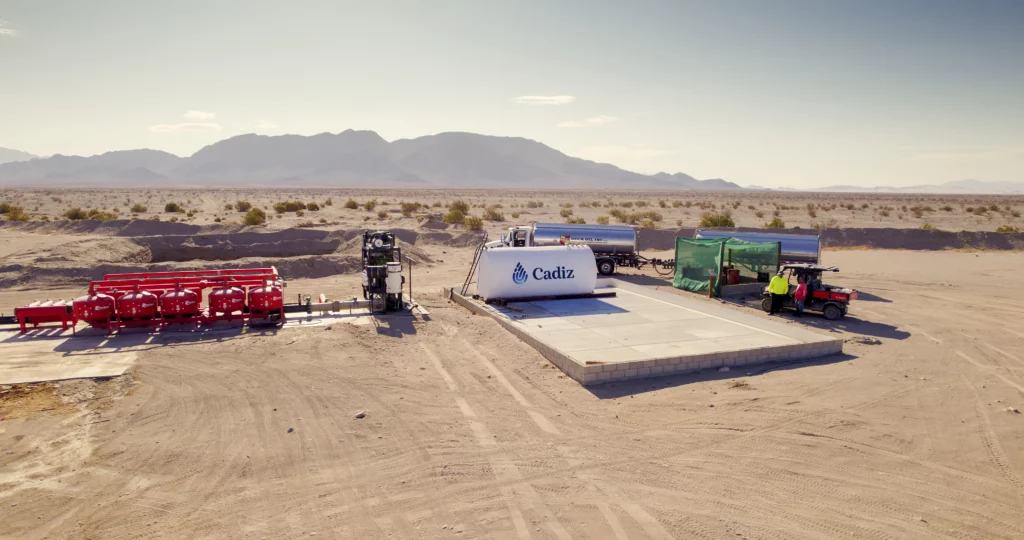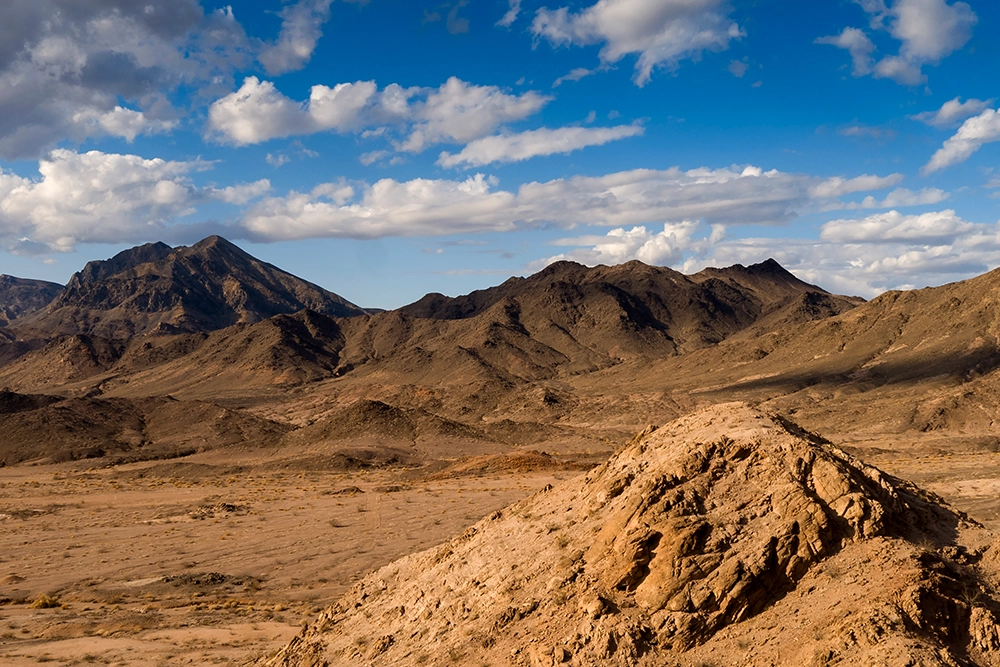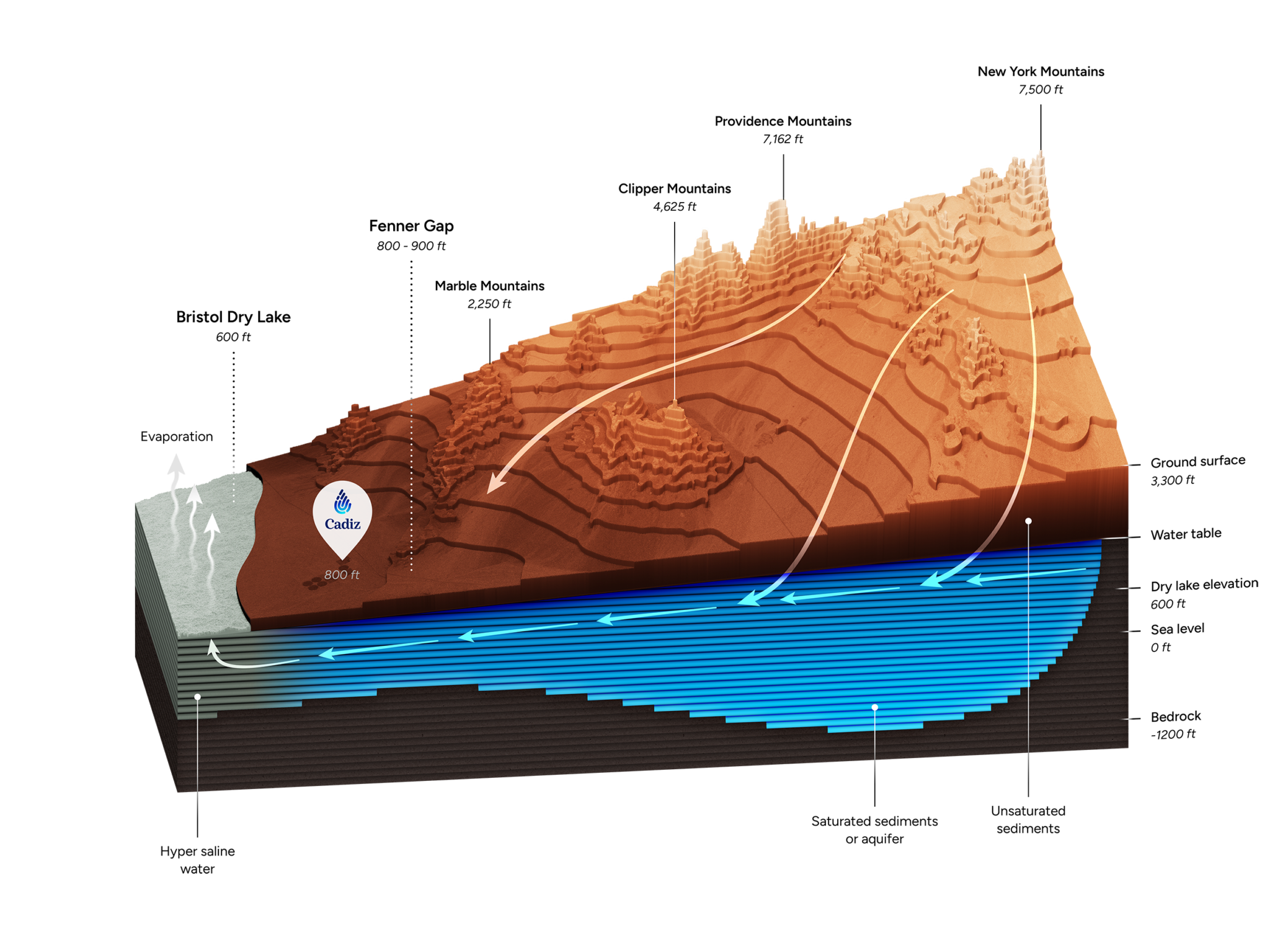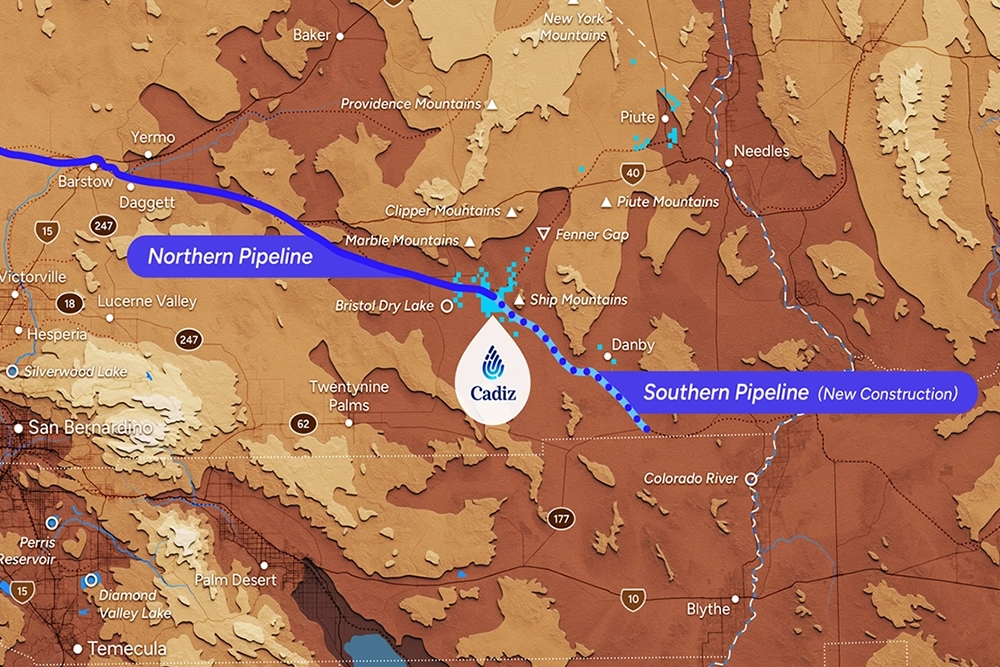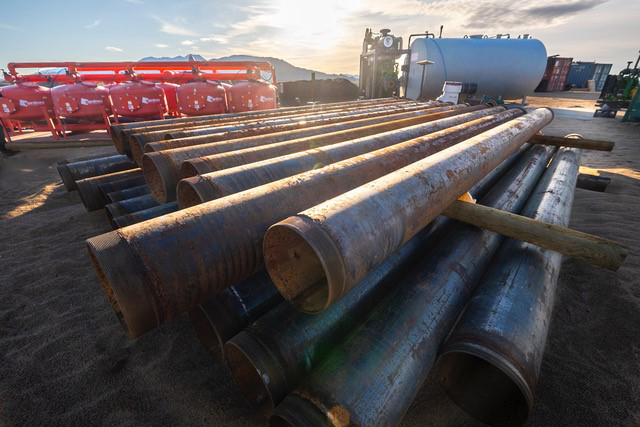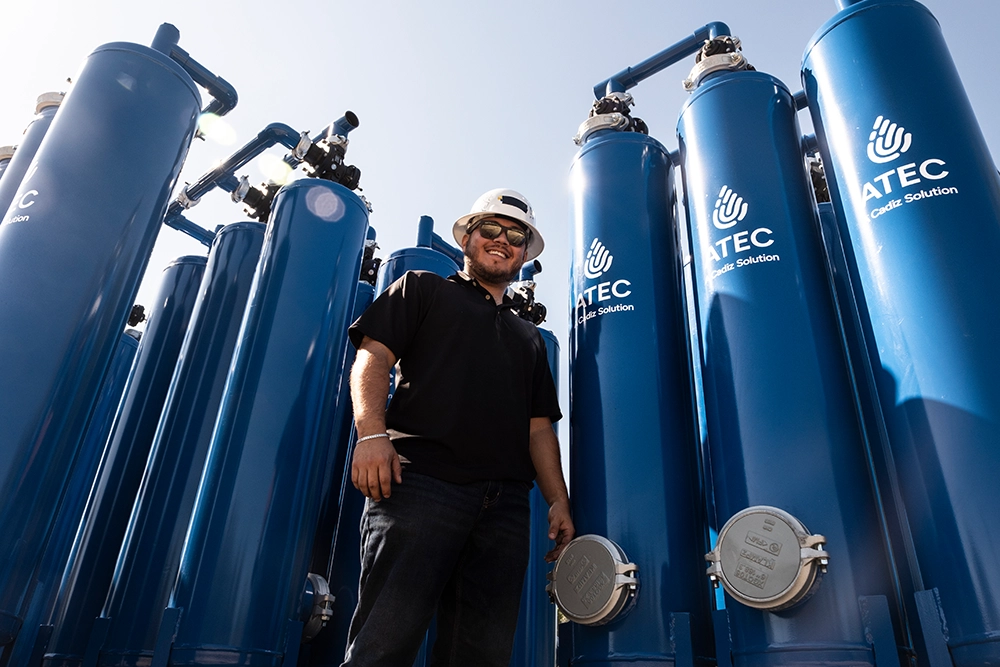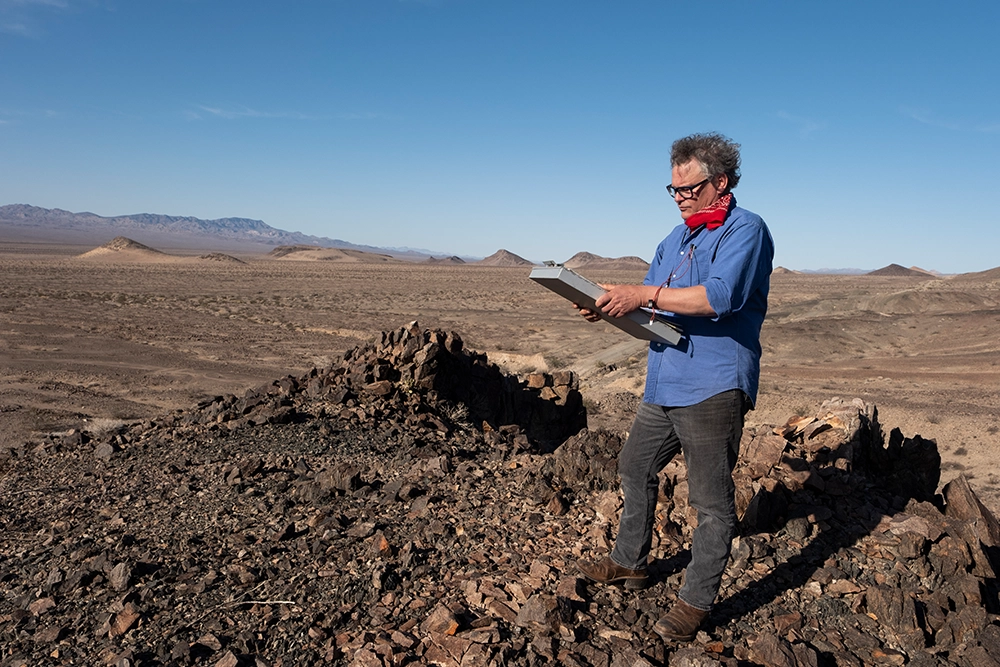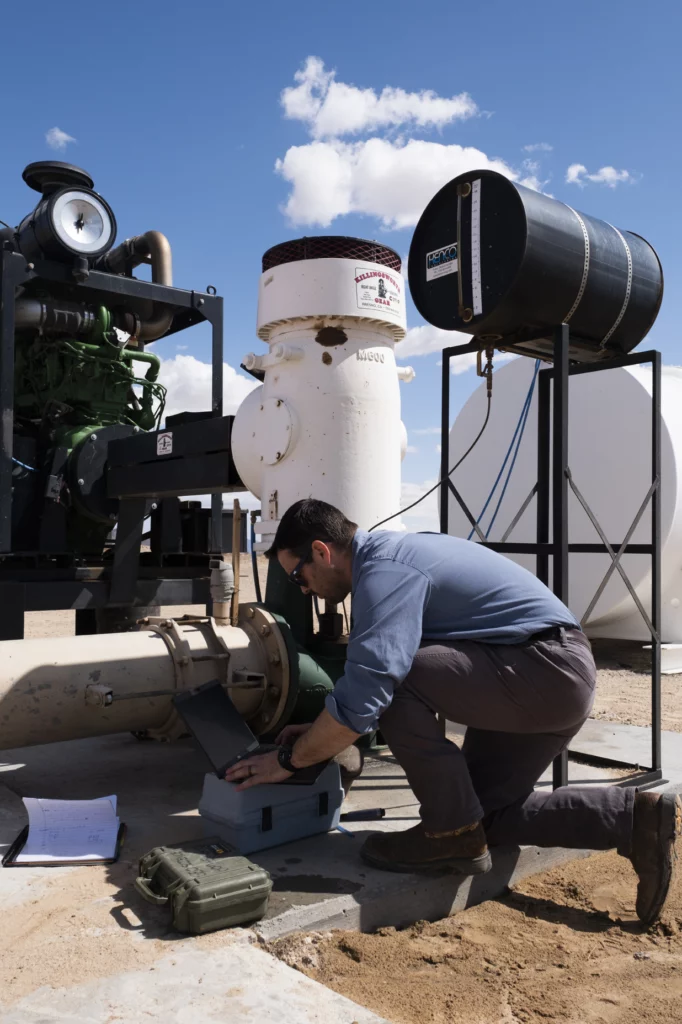Cadiz provides
innovative
water solutions
Solutions
New climate realities require new and innovative solutions. When it comes to rain, snow and water supplies, extreme is the new normal. Adapting to extreme new weather patterns resulting from climate change means finding new ways to capture, conserve, store and transport water
Our Clean Water Solutions
Supply
The Problem
Climate change has dramatically altered hydrologic cycles around the world. Unpredictable swings in weather patterns from extreme droughts to atmospheric rivers cause unreliable water supplies.
Our Solutions
New water supply generated by conserving existing groundwater before it is lost to evaporation and delivered to local communities for drinking water, groundwater replenishment and emergencies.
The Benefit
Reliable 50-year water supply fully permitted under a county approved sustainable yield plan; enough to serve over 1.2 million people annually.
Storage
The Problem
California’s snowpack is shrinking with more precipitation falling as rain and atmospheric rivers than snow. Our existing reservoirs and groundwater banks have limited ability to capture these storm waters.
Our Solution
Cadiz provides the largest new groundwater bank in Southern California with 1 million acre-feet of underground storage capacity, safe from evaporation.
The Benefit
Surplus water can be safely stored at Cadiz and withdrawn when needed, without loss to evaporation or risk of curtailment due to drought conditions.
Conveyance
The Problem
Our current water transportation network of canals and aqueducts was not designed for climate realities.
Our Solution
Repurpose existing pipelines originally built to transport oil to carry water to rural, poor and underserved communities in Southern California.
The Benefit
By renovating existing underground oil/gas pipelines to deliver water we expand needed critical water infrastructure faster, at lower cost and with less environmental impact.
Treatment
The Problem
Changes in natural sources and modern industrial practices continue to increase presence of groundwater contaminants that pose serious health risks.
Our Solutions
ATEC, a Cadiz Solution provides the most cost-effective, and versatile water treatment technology in the Western United States.
The Benefit
Our treatment technology is scalable making it an effective solution for residents of communities facing disproportionate risk of hazardous water as well as large municipality.
Expertise
The Problem
As our water challenges increase, we must continue finding and adopting efficient practices to conserve as much water as possible.
Our Solutions
Cadiz brings 40 years of experience with arid desert farming and groundwater management practices.
The Benefit
We can share what we’ve learned and help others adopt innovative practices for a more sustainable future.
Our Clean Water Solutions
New climate realities require new and innovative solutions. When it comes to rain, snow and water supplies, extreme is the new normal. Adapting to extreme new weather patterns resulting from climate change means finding new ways to capture, conserve, store and transport water
Learn & Explore
Supply
The Problem
Climate change has dramatically altered hydrologic cycles around the world. Unpredictable swings in weather patterns from extreme droughts to atmospheric rivers cause unreliable water supplies.
Our Solutions
New water supply generated by conserving existing groundwater before it is lost to evaporation and delivered to local communities for drinking water, groundwater replenishment and emergencies.
The Benefit
Reliable 50-year water supply fully permitted under a county approved sustainable yield plan; enough to serve over 1.2 million people annually.
Storage
The Problem
California’s snowpack is shrinking with more precipitation falling as rain and atmospheric rivers than snow. Our existing reservoirs and groundwater banks have limited ability to capture these storm waters.
Our Solutions
Cadiz provides the largest new groundwater bank in Southern California with 1 million acre-feet of underground storage capacity, safe from evaporation.
The Benefit
Surplus water can be safely stored at Cadiz and withdrawn when needed, without loss to evaporation or risk of curtailment due to drought conditions.
Conveyance
The Problem
Our current water transportation network of canals and aqueducts was not designed for climate realities.
Our Solutions
Repurpose existing pipelines originally built to transport oil to carry water to rural, poor and underserved communities in Southern California.
The Benefit
By renovating existing underground oil/gas pipelines to deliver water we expand needed critical water infrastructure faster, at lower cost and with less environmental impact.
Treatment
The Problem
Changes in natural sources and modern industrial practices continue to increase presence of groundwater contaminants that pose serious health risks.
Our Solutions
ATEC, a Cadiz Solution provides the most cost-effective, and versatile water treatment technology in the Western United States.
The Benefit
Our treatment technology is scalable making it an effective solution for residents of communities facing disproportionate risk of hazardous water as well as large municipalities.
Expertise
The Problem
As our water challenges increase, we must continue finding and adopting efficient practices to conserve as much water as possible.
Our Solutions
Cadiz brings 40 years of experience with arid desert farming and groundwater management practices.
The Benefit
We can share what we’ve learned and help others adopt innovative practices for a more sustainable future.
